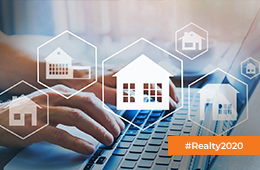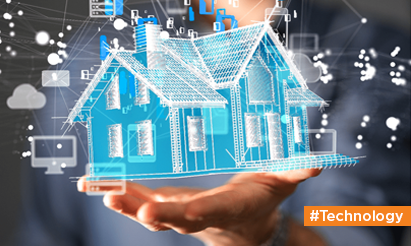Real Estate Builders Transforming Themselves With The Use Of Technology
New generation technology is disrupting the real estate sector as builders use virtual walkthroughs and online bookings to boost sales, 3D printing, artificial intelligence, etc., to improve construction quality and save resources.
The industry is estimated to reach $1 trillion by 2030. Primarily driven by uphill demand and several reforms during the past decade, the real estate industry was severely impacted like most other sectors by the pandemic. Technology has taken the forefront & is playing a vital role in optimizing workforce efficiency within the real estate and construction sectors.
Real estate developers often face critical problems such as remote communication, unorganized work breakdown structures, site budget control, HR management, etc. Project deliverables also get delayed due to these challenges faced by the construction workforce. In this article, we’ll discuss how real estate builders are transforming themselves by finding smart solutions using new & emerging technology.
The emerging role of automation for workforce efficiency
Automation plays a vital role in enhancing workforce efficiency, as it can seamlessly streamline manually intensive tasks within a shorter span of time. This ensures that the human resources can be allocated to innovative and timely processes, driving excellent output quality. Teams can improve site execution when key areas such as indent management, multi-site material transfer, and scheduling are automated through a centralized technology.
Further, this increase in workforce efficiency directly translates into more significant cost savings for projects that may already be experiencing some form of delays and over-expenditure. Developers can also track employee activities through progress reports, updates, and mapping technologies. All team members can seamlessly comply with given objectives with automated processes at large. This exponentially boosts transparency and employee output throughout the lifespan of the project.
Increasing reliance on digitalization
Digital communication is becoming the norm, and efficiency, safety, and hygiene are paramount. With the technology of newly emerging startups & other platforms, buyers and sellers of real estate can access information and consult online. Online catalogs, real-time video/virtual tours of the property, and online communication are some parameters that the real estate industry has begun adopting, using technology to make processes swifter and more user-friendly.
The real estate industry has begun adopting innovative processes that digitize traditional ones, enabling the realtor to analyze more data be accessible in real-time. At the same time, in this context, the Government extended the Digital India Land Records Modernisation Programme (DILRMP) for building upon the standard features existing in land records in different States and developing an Integrated Land Information Management System (ILIMS), enabling States to add their State-specific requirements.
Flexible & healthy workspaces
With the advent of ‘anywhere’ workplaces, real estate developers require flexibility in time, location, & environment for leasing commercial properties. The industry is hiring data scientists to procure information from building management systems, tenant feedback, and swipe cards to assess and introduce flexible operational models into their portfolios to ensure optimal commercial properties use. Further, the pandemic has completely altered how we think about our health and safety in public spaces. Density ratios, touch-less technology & sensors to monitor air pollutants, automated cleaning in post-pandemic workplaces can enable a healthy work environment.
Virtual reality (VR) and 3D mapping
These technologies replicate an environment using technological simulation. Drone technology allows users to create an alternative reality like building modeling. Adoption of VR or 3D mapping technology for providing digital walkthrough allows potential tenants, buyers, or managers to undertake property inspections through their devices. The technology merges images and videos of the property and forms a digital space that is identical to the real property. This potentially provides exclusive experiences for investors and, therefore, the chance to be ahead of competitors. Pre-construction architectures can also be viewed with a few clicks.
Lastly!
Developers leverage robotics, IoT, and other advanced technologies to translate designs to real-time execution effectively. They also assist in site inspection, safety quality, visual reporting, etc. They are also helping construction workers scientifically derive unique insights for improving project outcomes. The adoption of new technology has opened a pandora box in the real estate industry, which doesn’t seem to be closing at any time in the future.
Disclaimer: The views expressed above are for informational purposes only based on industry reports and related news stories. PropertyPistol does not guarantee the accuracy, completeness, or reliability of the information and shall not be held responsible for any action taken based on the published information.




